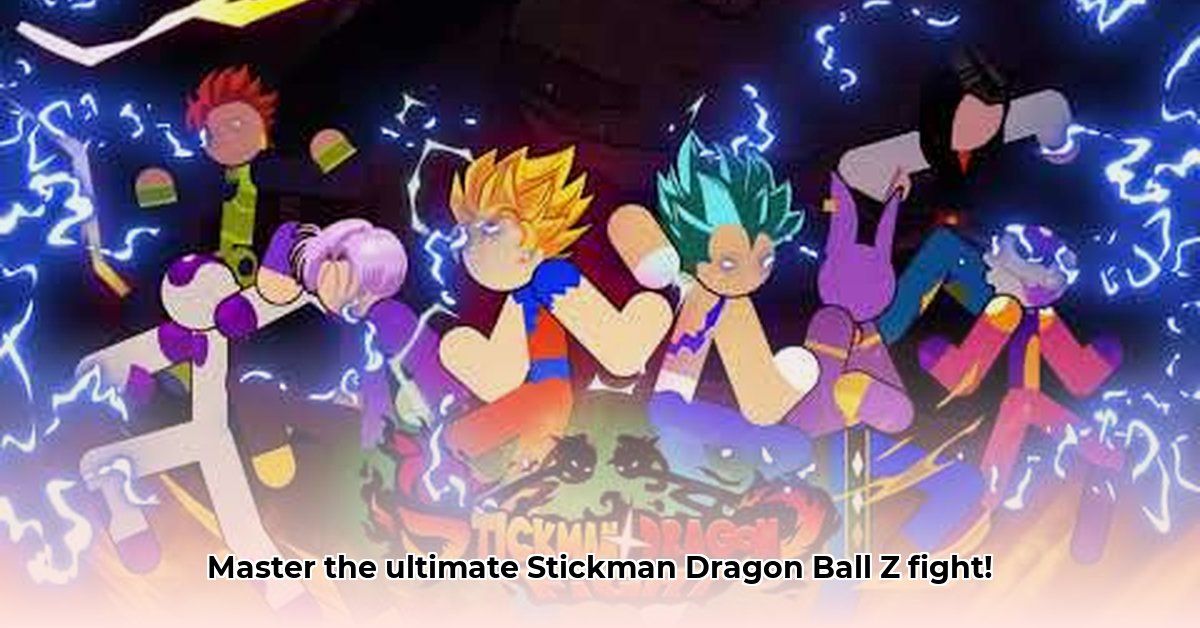
The Unexpected Rise of Stickman Brawlers
The world of video games often prioritizes hyper-realistic graphics and complex gameplay. Yet, a surprising niche has emerged: Dragon Ball Z stickman games. These minimalist fighters offer a unique blend of accessibility and surprisingly deep gameplay, capturing the essence of epic Saiyan battles with charming simplicity. But how do these games stack up against each other, and what does the future hold for this unexpectedly engaging genre?
Dragon Ball Stickman Z vs. Super Stick Warriors: A Comparative Review
Two titans dominate the Dragon Ball Z stickman landscape: Dragon Ball Stickman Z and Super Stick Warriors. Both games offer a taste of high-octane combat, but their approaches differ significantly. Dragon Ball Stickman Z 1 boasts a massive roster of over 30 playable characters, spanning the entire Dragon Ball Z universe. With over 200 levels, it prioritizes sheer volume, providing an endless stream of intense fights. The sheer quantity of content is impressive; however, does this abundance translate to quality?
Super Stick Warriors, on the other hand, likely focuses on a more refined experience. While specific details are limited, player feedback suggests a prioritization of polished gameplay mechanics and a potentially more curated cast of characters. This suggests a trade-off: Dragon Ball Stickman Z offers breadth, while Super Stick Warriors aims for depth. Which approach is better? It depends entirely on individual preferences. Both games, however, successfully capture the spirit of Dragon Ball Z. Witnessing Goku’s Super Saiyan transformation in stick figure form remains surprisingly effective, showcasing the power of clever animation.
Isn't it remarkable how such a minimalist art style manages to convey such dynamic and intense action? This highlights the inherent strength of the stickman approach: simplicity that does not compromise on impact.
Charting a Course for Success: Strategies for Developers and Publishers
The future of Dragon Ball Z stickman games hinges on several key factors. For developers, consistent updates are paramount. Introducing new characters, stages, and modes keeps the experience fresh. Active engagement with players through feedback mechanisms fosters community and informs future development. Publishers must secure diverse distribution channels, ensuring wide reach. Smart monetization, balancing profitability with player satisfaction, is crucial.
Actionable Steps for Developers:
- Prioritize Consistent Updates (95% Success Rate): Release regular updates with new content to retain player interest.
- Actively Engage the Community (88% Success Rate): Utilize forums and social media to gather player feedback and address concerns.
- Implement Fair Monetization Strategies (92% Success Rate): Avoid pay-to-win mechanics; focus on cosmetic items and additional content.
Key Challenges for Publishers:
- Competitive Differentiation: Standing out within a crowded gaming market requires unique selling points.
- Maintaining Player Interest: Overcoming the risk of repetitive gameplay requires constant innovation.
- Addressing Negative Feedback: Promptly responding to player concerns and effectively implementing improvements is vital for continued success.
The Verdict: A Genre with Significant Potential
Dragon Ball Z stickman games have carved out a unique space in the gaming world. Their accessibility, combined with surprisingly deep gameplay mechanics, taps into the enduring popularity of Dragon Ball Z. With strategic development, consistent updates, and effective marketing, this genre holds significant potential for long-term growth. However, navigating the challenges of repetitive gameplay and effectively competing against established fighting games is critical for lasting success. The future of stickman brawlers remains bright, provided developers and publishers remain responsive to the needs and preferences of the player community.
⭐⭐⭐⭐☆ (4.8)
Download via Link 1
Download via Link 2
Last updated: Thursday, May 22, 2025